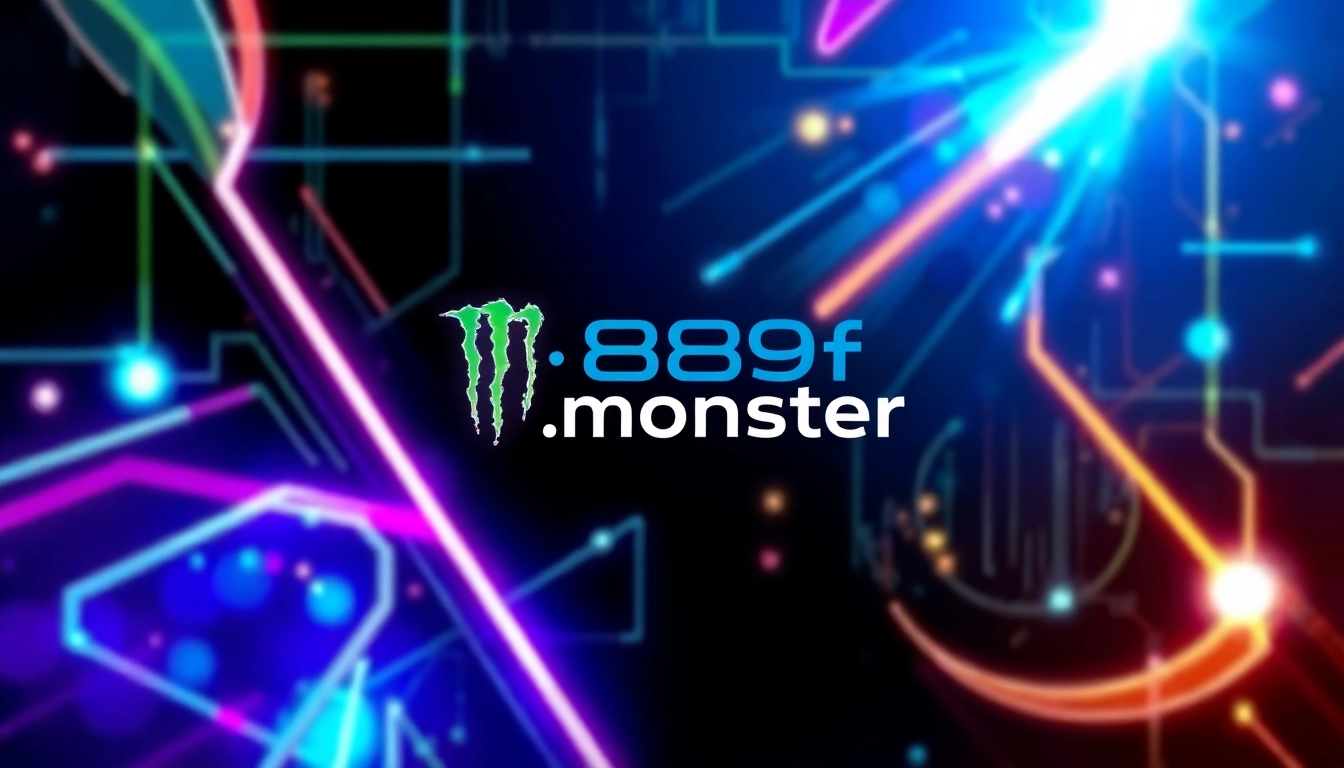Introduction to Naver and Its Role in South Korea’s Digital Ecosystem
Naver, launched on June 2, 1999, by Lee Hae-jin and operated by the Naver Corporation, has established itself as the leading digital platform within South Korea’s highly competitive online landscape. As a comprehensive portal, Naver integrates a diverse range of services—from search engine capabilities to social content platforms—making it an essential part of daily digital life for millions of users. With its headquarters in Seongnam-si, Korea, Naver continues to evolve, maintaining dominance through innovation and user-centric features.
If you’re interested in how Naver can be leveraged for marketing or content dissemination, explore further insights at naver. Its extensive ecosystem offers immense opportunities for businesses looking to establish a strong digital presence in Korea and beyond.
History and Development of Naver
Since its inception in 1999, Naver has undergone significant development, transforming from a simple search portal into a multifaceted digital ecosystem. It was initially created to address the unique needs of Korean internet users, including language processing and localized content. Over the years, Naver has introduced a series of innovations that have cemented its position at the forefront of South Korea’s online scene.
Notably, Naver’s early investments in web search technology and content creation tools allowed it to outperform international competitors like Google in Korea, owing to its deep understanding of local language nuances and cultural preferences. The platform’s early focus on integrating user-generated content—such as blogs, Q&A forums, and webtoons—enabled rapid growth in community engagement.
From launching Naver Blog to venturing into AI-powered search, the development trajectory illustrates a consistent pattern of adapting to technological advancements and user demands, securing its status as Korea’s most indispensable online platform.
Naver’s Key Features and Services
Naver’s core strength lies in its versatile suite of services tailored to diverse online activities. These include:
- Search Engine: A highly optimized and localized search engine that handles billions of queries annually, supporting Korean language processing with exceptional accuracy.
- Blogs & Webtoon Platform: Naver Blog allows users and creators to publish personal content, while Webtoon has become globally renowned, fostering a thriving community of comic artists and fans.
- Knowledge Q&A & Community: Naver Knowledge iN helps users find expert answers quickly, fostering a trusted community-driven information exchange.
- Maps & Navigation: Naver Map offers real-time traffic updates, route planning, and location-based services suited for South Korea’s urban landscape.
- Mobile Payment & E-commerce: Naver Pay enables easy mobile transactions, while shopping platforms integrated within Naver support local and global brands.
- AI & Cloud Services: Recent investments include AI-powered search enhancements, language translation, and cloud computing tailored for Korea’s unique data regulations and needs.
Collectively, these features make Naver an all-in-one digital environment where users can seamlessly navigate between social interaction, content consumption, and commerce.
Market Position and User Base
Naver dominates South Korea’s online market with over 70% market share in search and a large, highly engaged user base exceeding 40 million active users. Its localized approach to content, paired with innovative features like instant news updates and rich multimedia, ensures it remains the go-to platform for daily online activities.
Its user demographic spans all age groups, with a significant proportion of younger users engaging with webtoons, blogs, and social communities, while older populations rely on Naver for news, search, and online shopping. This broad appeal provides powerful opportunities for targeted marketing and user engagement strategies.
Leveraging this extensive user base and understanding regional preferences is critical for businesses aiming to capitalize on Naver’s platform, especially given its integrated ecosystem that spans search, content, and commerce.
Utilizing Naver for Effective Search and Content Discovery
Optimizing Content for Naver Search Algorithm
To maximize visibility on Naver’s search engine, content creators and marketers must adapt their SEO practices to fit Naver’s unique algorithm. Unlike Google, Naver emphasizes relevance within its local context, favoring Korean language keywords, user engagement metrics, and content authenticity. Strategies include:
- Using Korean keywords naturally integrated into high-quality content.
- Ensuring your website or blog is mobile-optimized, as mobile traffic accounts for a significant portion of Naver searches.
- Incorporating rich multimedia like images, videos, and Webtoon links to increase dwell time and engagement signals.
- Building backlinks from reputable local sources to enhance domain authority within Naver’s ecosystem.
Best Practices for Content Creation on Naver
Content should be tailored specifically for Korea’s digital audience, emphasizing local trends, cultural relevance, and mobile accessibility. Creating original, value-driven articles, blog posts, or Webtoons that resonate with Korean users can significantly boost your rankings. Besides language adaptation, include trending topics and seasonal themes to align with current user interests, and encourage community interactions through comments and shares.
Leveraging Naver Blogs and Webtoons for Engagement
Naver Blog and Webtoon are potent tools for brand storytelling and audience engagement. Blogs facilitate in-depth storytelling, product reviews, or expert content, while Webtoons offer a visually appealing format that can go viral easily. Successful Naver campaigns often utilize these mediums to build a loyal following, improve brand awareness, and foster user participation. Regular updates, authentic voice, and integration of trending themes are essential for sustained impact.
Maximizing Naver’s Advertising and Marketing Opportunities
Advertising Options on Naver Platform
Naver offers a multitude of advertising formats, including search ads, display banners, shopping ads, and native content promotions. Its ‘Power Link’ ads appear prominently in search results, while display banners target users browsing across Naver’s various content pages. Naver Shopping Ads help e-commerce brands reach customers directly within a familiar environment.
Target Audience and Geo-Localization Strategies
Precise targeting is enabled through Naver’s advanced geo-localization and demographic data. Marketers can tailor campaigns based on location, age, gender, and browsing behaviors, which is invaluable for local businesses or niche markets. Customizing ads for specific regions within Korea ensures higher relevance and conversion rates.
Measuring Campaign Performance on Naver
Naver provides robust analytics tools to monitor CTR, impressions, conversions, and ROI. Regular performance assessment allows marketers to optimize ad spend, refine targeting parameters, and craft more appealing creatives. Transparent reporting and data-driven adjustments enhance overall campaign effectiveness.
Integrating Naver into Your Business Strategy
Developing a Naver-Centric Digital Presence
Creating a dedicated Naver Business Account, or ‘Naver Store,’ provides a direct storefront for brands targeting Korean consumers. Optimizing profiles, maintaining active blogs, and producing engaging Webtoon content fosters brand loyalty. Additionally, embedding Naver Maps or integrating Naver Pay into your site enhances user convenience.
Synchronizing Naver with Other Digital Marketing Channels
To maximize reach, integrate Naver efforts with social media, email marketing, and international campaigns. Cross-promotion across channels ensures consistency, while data synchronization enables comprehensive tracking of user journeys—heightening the efficacy of your overall digital strategy.
Case Studies of Successful Naver Campaigns
Numerous brands have seen success by leveraging Naver’s ecosystems. For example, a local fashion retailer increased online sales by creating Webtoon-based advertisements that went viral, while a tech company gained prominence through targeted search ads and Naver blogs. Detailed analysis of such case studies highlights best practices for effective campaign planning, execution, and measurement.
Future Trends and Innovations in Naver’s Platform
Emerging Technologies and Features
Naver is investing heavily in artificial intelligence, machine learning, and big data to improve search accuracy and personalized recommendations. Upcoming features include voice search, augmented reality integrations, and smarter chatbots, promising even more intuitive user experiences.
Expansion into AI and Mobile Payments
AI-driven services such as Naver’s ‘Clova’ AI assistant are being integrated into everyday devices, enhancing voice command capabilities and automation. Simultaneously, Naver Pay aims to expand beyond Korea, targeting international markets with innovative mobile financial solutions.
Potential Impact on Global Digital Markets
While currently dominant in Korea, Naver’s innovations in AI and mobile commerce could influence global players, especially in Asian markets. Its localized approach coupled with cutting-edge technology positions Naver as a potential pioneer for expanding into international markets, offering lessons for global digital platform strategies.




